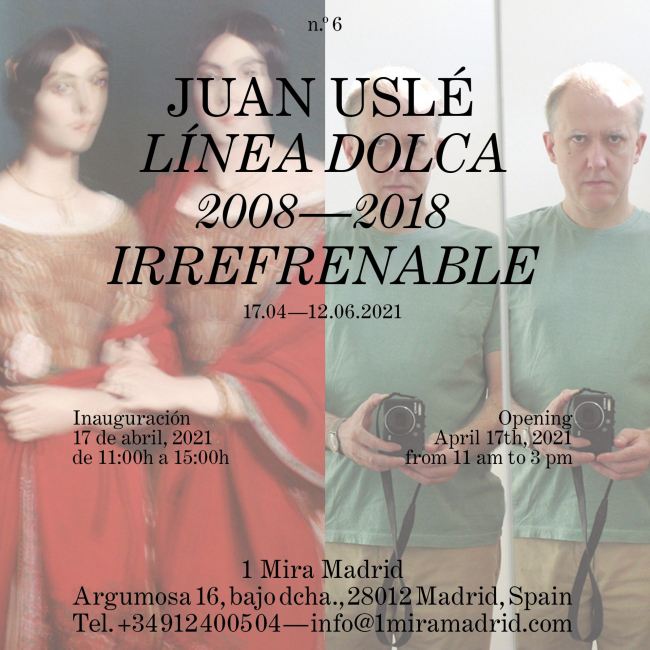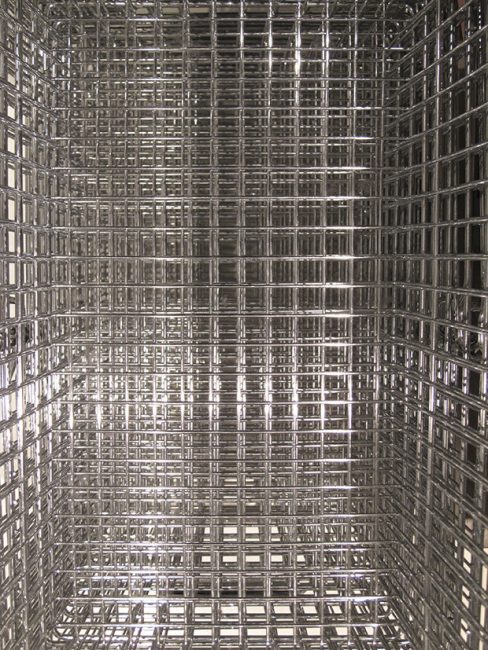Descripción de la Exposición
Juan Uslé’s fourth solo exhibition at Galerie Thomas Schulte, Línea Dolca 2008 – 2018, Irrefrenable presents an extensive selection of small-scale photos, alongside paintings of similar format, spanning ten years of the artist’s career. It was conceived and curated by Mira Bernabeu. As part of Uslé’s rich personal archive of images, the photos find coherence through intimate, close-cropped views, angles and framings, which capture subtle details in varying degrees of abstraction, taken from the artist’s encounters and environments, both natural and architectural, private and public.
Though Uslé’s primary medium is painting, his camera has long been a close collaborator. The two media not only coexist as side-by-side, complementary methods in his practice; at times they even converge within a single image. The artist’s paint-streaked palm fills the foreground of a photo titled Tatuaje y Prueba, NY (2018). Out of focus, it hovers in front of a series of rhythmic lines in the same black paint—further traces of the painting process. Elsewhere, tightly cropped images show corners and snippets of Uslé’s studio, the objects and materials that surround and facilitate his work. And in others still, dark, large-scale paintings from his series Soñé que revelabas (I dreamt that you revealed) appear, in partial view, as backdrops. A particularly intimate series, these paintings manifest a deep physical connection: the rows of repeated, tick-like brush marks follow the beating of Uslé’s heart, lending them a durational dimension—like time-based media. In the photos, various objects—a ladder, a chair—or alternatively bodies, stand before the canvases: a minor interference that locates them within space, or even as space, while building temporal layers.
Even when the body is not visibly present, there is something inescapably bodily in the photographs—a feeling that is compounded by the intimacy of their small scale. They are, after all, framed by Uslé’s body; they are the places he has traveled within and through, that he has passed by, inhabited. They are the corners, the edges, the bits that his eye has picked up and extracted from his surroundings.
The closeness and subsequent abstraction in the photos frequently compresses them into highly textured patterns—further invoking embodied perception. A staircase becomes a series of flat horizontal lines. The bottom edge of a curtain alters perspective, becoming parallel to the hardwood floor above which it hangs. The shadow of a traffic sign pole melds with the pole itself to form a continuous vertical line.
In A Todo El Mundo, Valencia (2018), a sticker-coated pole flattens out against the monochrome background of a building facade. This image is also part of a triptych, which comprises two vertical photos and a central, horizontal painting. In the second photo, titled Pliegues y Espera, London (2018), a series of multi-colored lines forms the pattern on a piece of textile—what appears to be the bottom edge of an article of clothing hung against a wooden door. The painting that connects the two images, Horizontal Courbet, Benissa (2018), depicts a thick line—patched together from shades of mostly blue and green, in layers that appear stripped away—reaching from edge to edge across the solid brown background. In all three images, the orientation is reiterated by the movement of lines—the central protagonists. Though similarities of color and form pervade the triptych, it is primarily the rhythm that holds them together—the rhythmic movement that they jointly compose.
In a two-part vertical work titled Saja’s Laberint, NY, 2016 – Destello (Presa), Benissa, 2018 (2016/2018), the photographic component features an entanglement of fluorescent plastic threads against a wrinkled black leather surface that suggests a seat cushion. The reddish-pink and yellow-green threads contrast starkly with the background, which oscillates between shadowy abyss and shiny, reflective surface—an electrical storm partially illuminating a dark sky. The black backdrop bleeds into that of the painting stacked below it, in which a series of translucent blue brushstrokes rise up from the bottom edge of the canvas, stopping about two-thirds of the way up. The strokes waver and vary slightly, fraying at the edges, repetitive and rhythmic, yet shifting: evoking waves, or a current brought to an abrupt stop.
A distorting mirror effect occurs in these multi-part works that set photography and painting in juxtaposition: lines are inverted, traces of color are displaced, forms are dissolved—like a skyline reflected against rippling waters. A similar relationship emerges in Tres Mirando, NY (2018), in which the back of a person’s head fills the foreground and bottom half of the photograph, as an out-of-focus painting hangs on the wall behind. A face looks back from the painting, meeting the gaze, we imagine, of the viewer who stands before it. Facing each other, the painted head and that of the viewer within the image produce an effect akin to mise en abyme, situating us, the external viewers, as another reflection, a further repetition, an echo.
It is in these layerings and repetitions that space opens up, expands. The opacity of the images is underlain with hidden depths. In a number of Uslé’s photos this effect is visualized through translucent screens—textiles, glass, fencing, window shades. In Covered, NY (2018) a tightly-framed building facade is shown from a side angle. The building is under construction, contained and partially obscured by semi-transparent safety netting. The geometric pattern of windows, the faint vertical lines of the building’s encasement, the ambiguity of its veiled appearance, produce a textural quality akin to his paintings.
The relationship that manifests between the two media is tangible, though it does not suggest that one is intended as a translation of the other. The photographs—whether as individual moments or a mutable whole—articulate specificities, surface properties, shifts in light, chance encounters between forms: the multitudinous spaces that unfold before Uslé’s eye. In his paintings, textures and colors appear distilled from these moments—as essences rather than direct correspondences—in effect amplifying their illusory character. Taken together, the works prompt a closer look, a reorientation; ultimately highlighting Uslé’s long-standing preoccupation with exploring his immediate surroundings through the lens of the camera, and the abstract painterly language that emerges in dialogue with it.
—Text by Julianne Cordray

Exposición. 17 abr de 2021 - 31 jul de 2021 / 1 Mira Madrid - 1MM / Madrid, España

Exposición. 08 oct de 2020 - 09 nov de 2020 / Biblioteca Central y Archivo Histórico de Cantabria / Santander, Cantabria, España

Exposición. 21 sep de 2018 - 16 nov de 2018 / espaivisor / Valencia, España

Formación. 08 may de 2025 - 17 may de 2025 / Museo Nacional Centro de Arte Reina Sofía (MNCARS) / Madrid, España